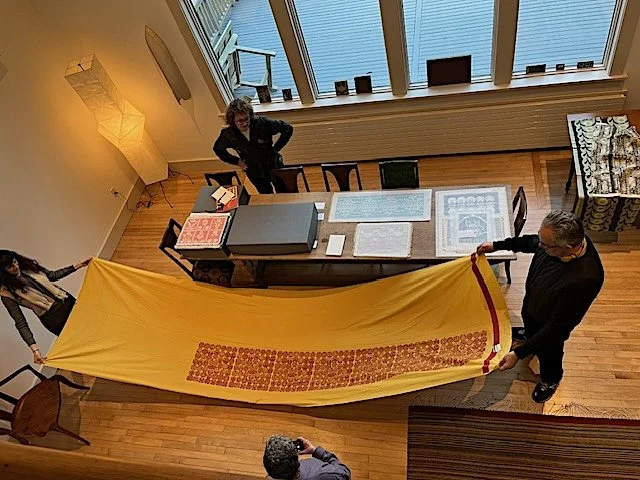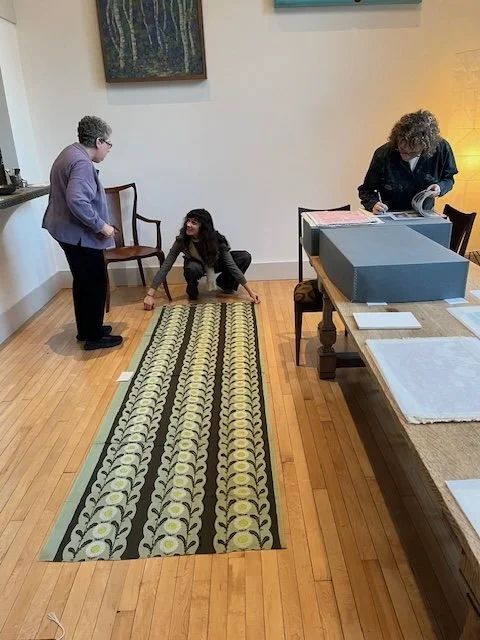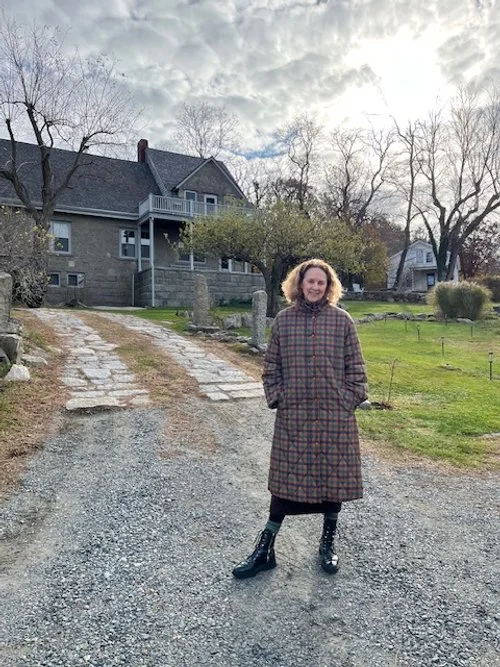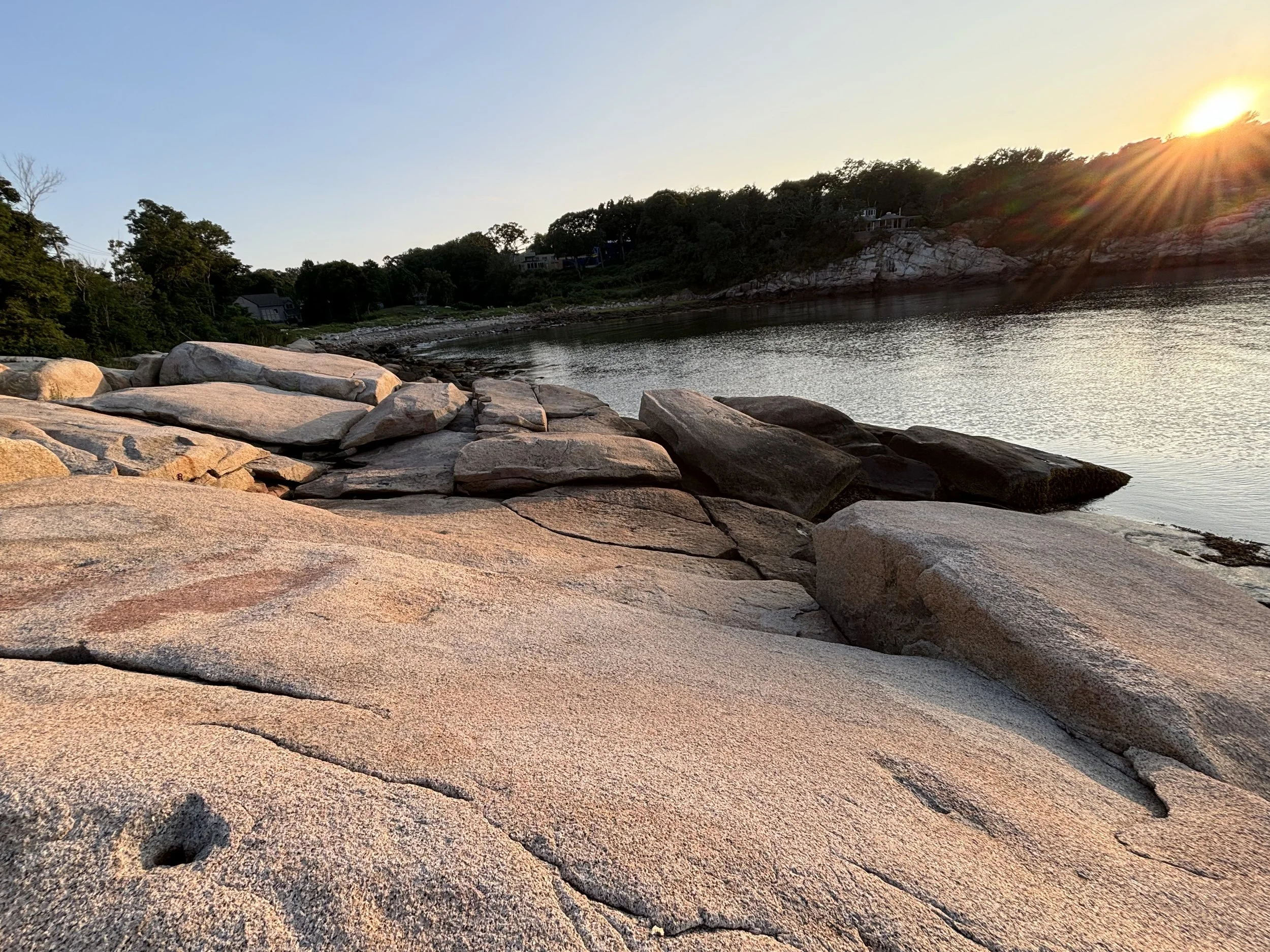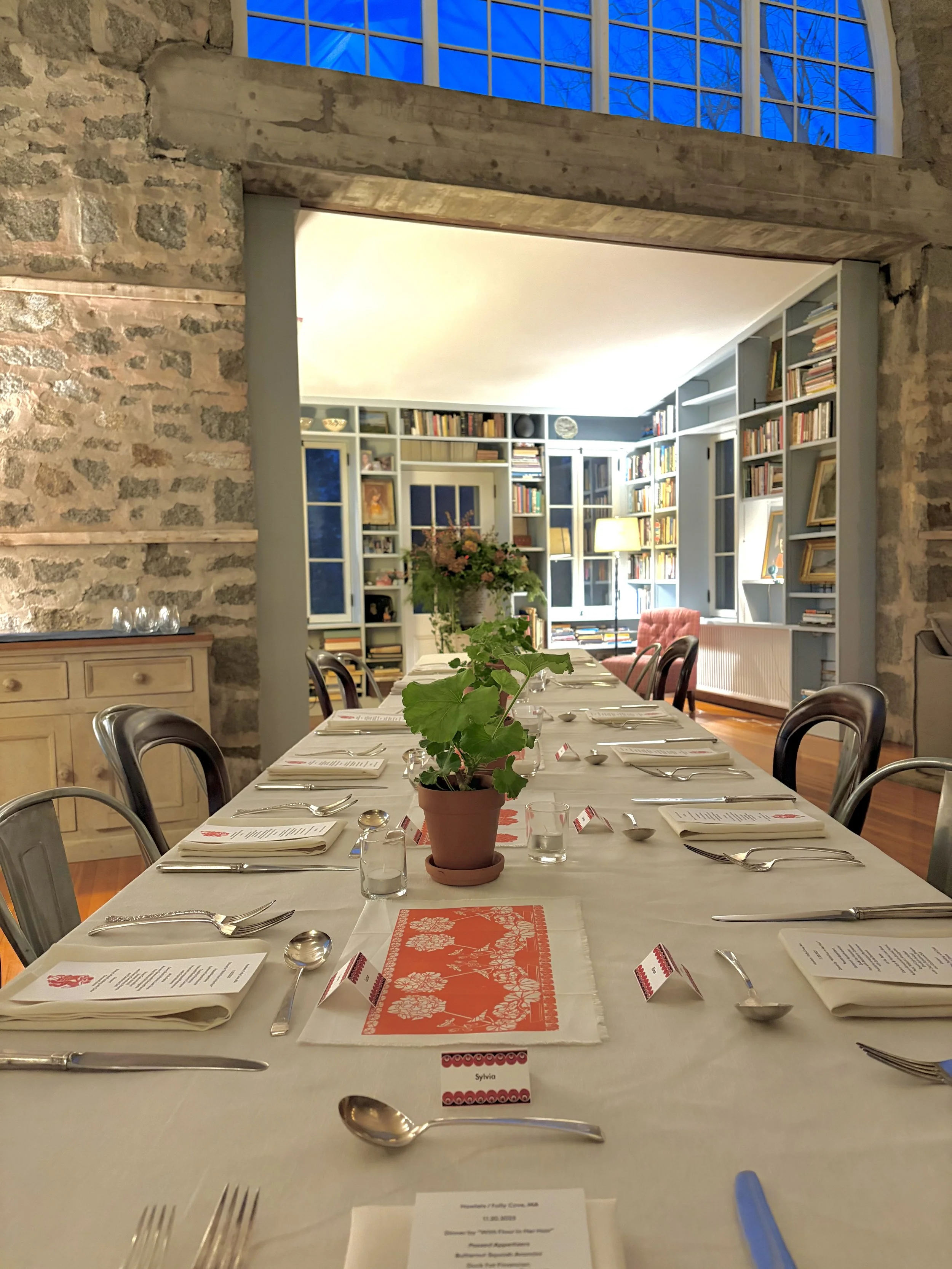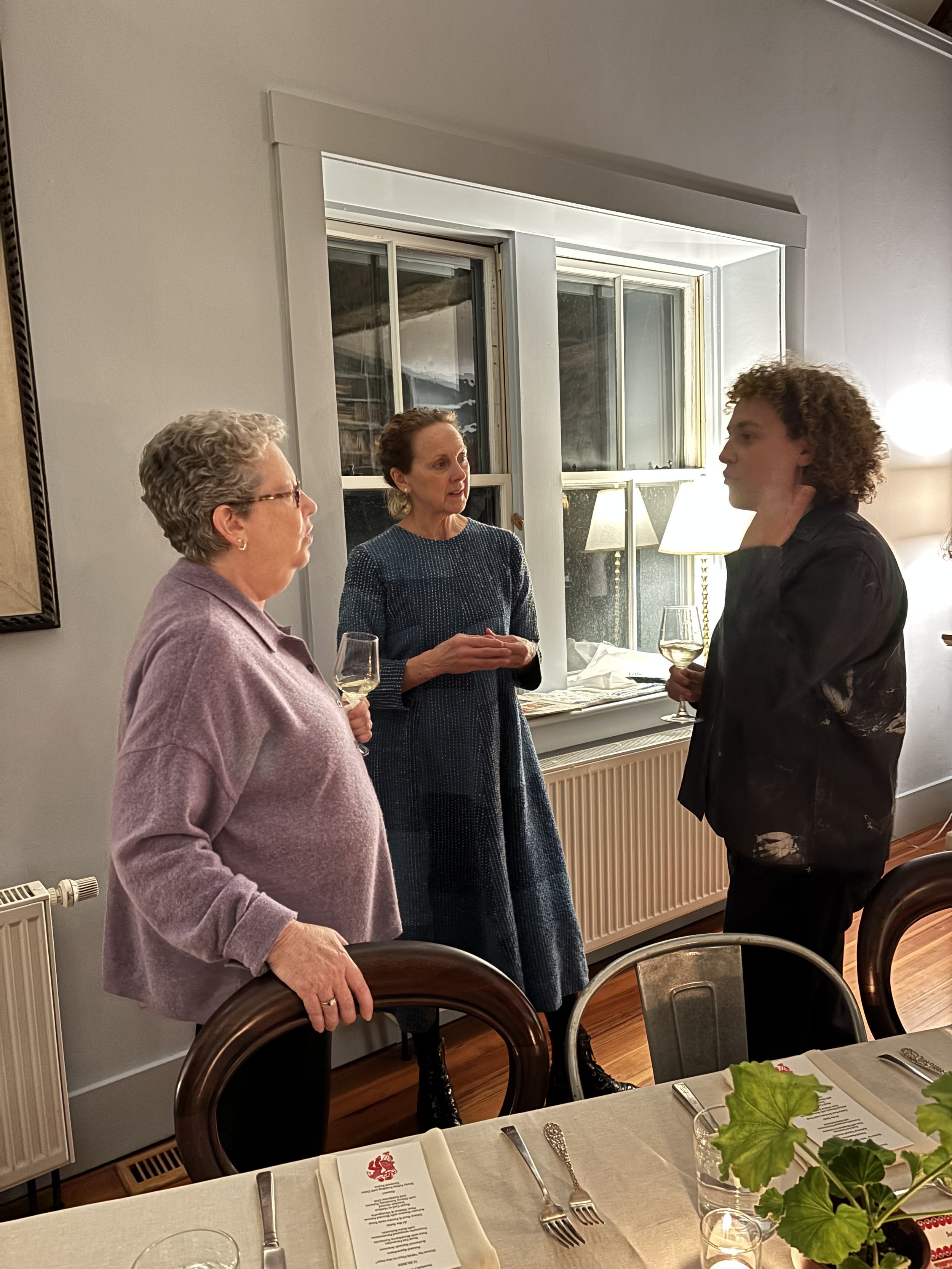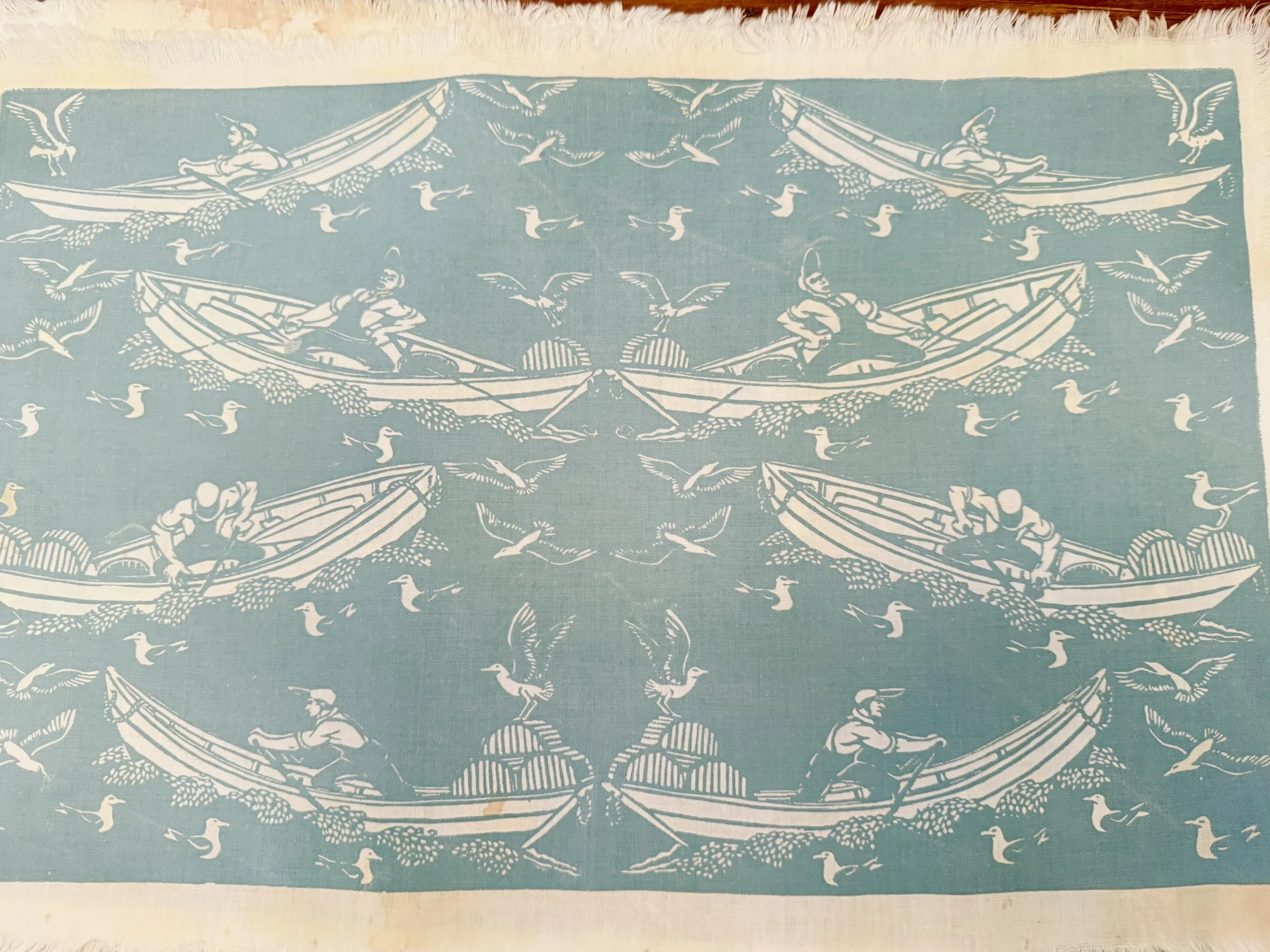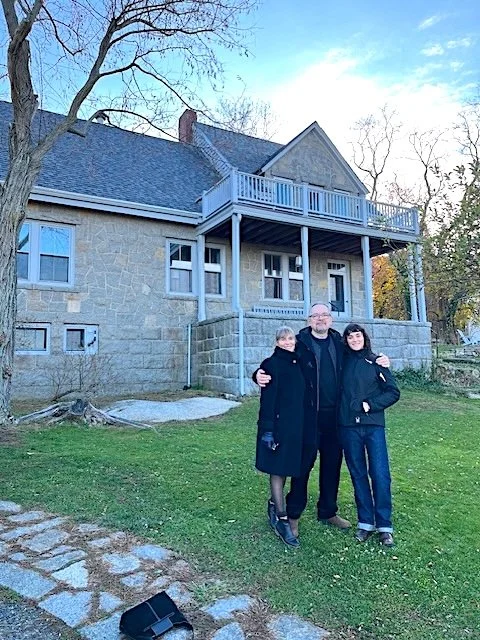Cape Ann's Folly Cove Designers meet The Metropolitan Museum of Art
This is “Folly Cove Designer’s Diploma,” a printed textile by Virginia Lee Burton documenting a block print artist’s creative process. Each member of Cape Ann’s Folly Cove Designers received an edition of this print once they had designed and carved a block worthy of the high snowcapped standard the guild demanded of its members.
Through the middle of the last century, to identify a Cape Ann person as a Folly Cove Designer ascribed esteem; today it inspires seconds of hushed silence. In 1968 the textile guild voluntarily shuttered with the death of founder and artistic pilot Virginia Lee Burton. The remaining members sadly delivered their blocks, presses, works, and ephemera to what was then the Cape Ann Historical Museum, and is now the Cape Ann Museum. Today that museum houses the most extensive collection of these textiles: exquisite, lyrical designs that use pattern, balance, movement, and joy to serve the very specific subject of Cape Ann terroir: from birds, to gardens, to dances, to harbors, and to villages.
Eva Labson, Sylvia Yount, Amelia Peck from The Metropolitan Museum of Art
This past week, the Folly Cove Designers received a new diploma of sorts: Sylvia Yount, the Lawrence A. Fleischman Curator in Charge of the American Wing of the Metropolitan Museum of Art, along with Amelia Peck and Eva Labson from the Antonio Ratti Textile Center came to meet the Folly Cove Designers in situ.
Head curator at the Cape Ann Museum Martha Oaks and Executive Director Oliver Barker first greeted the Met crew at the CAM Green with a presentation of some of the museum’s Folly Cove Designer collection. Then the Met people were driven to Folly Cove itself.
For much of her life, Lee Steele, one of the last of the Folly Cove Designers, lived in the former studio of artist Edwin Swift Clymer, across the street from the Folly Cove Designers’ Studio. Steele passed in 2022 at 97. Her daughter Nancy, along with husband Tom Huhn and daughter Lucia adopted the home as theirs. It was in Clymer’s former studio that Yount, Peck and Labson viewed the Steele works and those from two other Folly Cove Designer families: Louise Kenyon and Lee Natti. (Works by Virginia Lee Burton, owned by her niece June Vail, were shown online.) Lucia Steele and Peter Hristoff, who had curated the 2024 exhibit of Folly Cove Designers at the School of Visual Arts in NYC, assisted in the organization.
Lucia Steele showing works by Louise Kenyon to Amelia Peck while Eva Labson documents, photo by Sylvia Yount
For dinner, I had the pleasure of inviting everyone across the street to my family’s home, Howlets, the studio built by artist Ellen Day Hale. and where many other early 20th century artists worked, including Theresa Bernstein and William Meyerowitz.
Heather Atwood in front of Howlets, photo by Syliva Yount
Artist Lilian Westcott Hale, Ellen Day Hale’s sister-in-law, inherited the studio. All of these Folly Cove artists preceded the Folly Cove Designers by a generation. Ellen Day Hale, Edwin Clymer and others were aging when Virginia Lee Burton, a young mother, arrived in Folly Cove with her husband sculptor George Demetrios, but it’s a very short walk to each of their homes today: they all certainly would have known of each other as neighbors and artists.
Living here, I think about all of these artists every day, but particularly Virginia Lee Burton and the Folly Cove Designers: Virginia Lee Burton grew up in a west coast aesthetic, not New England, and it doesn’t get much more New England than this northern Gloucester cove into which the Atlantic Ocean rolls. Her art education was steeped in American Regionalism, not European classicism like every one of her Folly Cove artist neighbors, including her husband. And yet Burton sat at her desk every day and made the art that was inside of her. It was that ability to connect with her personal genius, and commit to it, that resonated with people. Burton’s work - and therefore that of the Folly Cove Designers - made design both human and magical. The subjects were ordinary life - like Burton’s cat’s kittens - and yet the design made this story of feline fecundity mystical. Burton took drawing lessons from her husband, but she never strayed from her personal vision. And the Folly Cove Designers - residents of this humble northern village - adopted Burton’s commitment to creativity like it was another one of their children, and they loved that creating as much as she did.
The joy of engaging with one’s senses and creating something from them, making something profoundly beautiful with no national reward or fame ever anticipated, for the joy and community of it, are rare lessons. The Folly Cove Designers were a rare group. I’m certain many of those lessons - particularly for Burton - were born of Folly Cove water and rocks.
“With Flour in Her Hair” served dinner on a table decorated with geranium prints by Lee Steele, placecards and menu cards designed by Allen Bianchi at Maharam.
The Kenyon, Natti, and Steele families gathered with Sylvia, Amelia and Eva over this (celestial) meal. Folly Cove heard more Folly Cove Designer talk than it had for fifty-five years.
Amelia Peck, Heather Atwood, and Eva Labson, photo Nancy Steele
Something about the Folly Cove Designers - the joyful energy characteristic in all the works - even through a World War - radiated in this room, and because of that joy was a guest that night.
The next morning Oliver Barker joined everyone for a happy, farewell breakfast. A new diploma for the Folly Cove Designers just may have The Metropolitan Museum of Art signature at the bottom. We will report back.
Never underestimate the relevance of Folly Cove.
Thanks to the special friends who helped: Nancy Steele, Peter Hristoff, and Lucia Steele.

